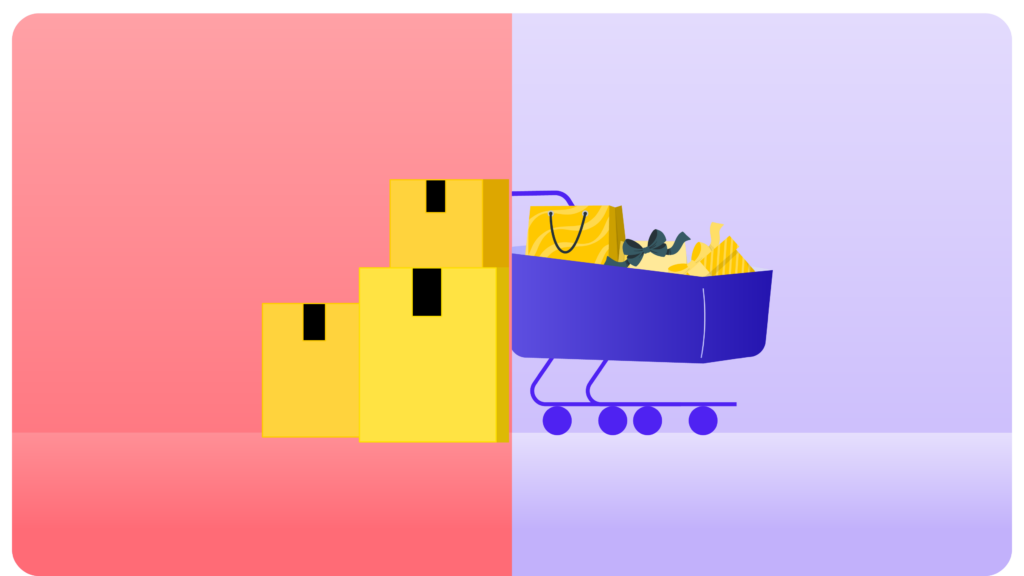India hosts a wide variety of wholesale and retail markets that cater to the needs of its vast population.
These markets’ diverse range of goods attract both traders and customers.
This article lists some of the biggest wholesale and retail markets in India, along with the total footfall within a 5-minute walk from the market, in no particular order.
Biggest Wholesale and Retail Markets in India with Footfall Data
1. Chandni Chowk
Chandni Chowk in Delhi is one of India’s oldest and busiest markets, offering both wholesale and retail trade.
This wholesale market offers a vast array of goods including bridal wear, fabrics, jewelry, electronics, and household items. The market is also said to be the go-to destination for wedding shopping, providing an extensive range of products at negotiable prices.
On the other hand, the streets are also famous for delicious street food, making it a must-visit destination for shoppers.
The market’s narrow lanes house thousands of shops that attract 4-5 lakh footfall on a daily basis, higher than major malls in Delhi-NCR combined.

Current footfall trends at Chandni Chowk
Source: A free site report generated by RetailIQ

2. Surat Textile Market
Surat, located in Gujarat, is famously known as the “Textile City of India.” This market specializes in textiles and silk, making it a “hub” for sarees, lehengas, salwar suits, dress materials, and fabrics like georgette, chiffon, and crepe.
Designers and retailers from across the country source high-quality textiles from Surat due to its competitive pricing and extensive variety. Additionally, the market supports a vast network of weavers and craftsmen, contributing significantly to the region’s economy.
Some of the prominent areas in the Surat textile market include Millennium Textile Market, Raghukul Textile Market, Good Luck Market, and Super Tex Tower.

Daily footfall trends at Surat Textile Market
3. Gandhi Nagar Market
Gandhi Nagar Market in Delhi is one of the largest wholesale garment markets in India.
The market boasts 14,000 shopping stops and 5,000 small manufacturing units, specializing in clothing production.
It is a go-to destination for any type of fabric, ready-made garments, and clothing. Retailers and manufacturers usually source affordable and high-quality apparel in bulk from this market.
Also, the market’s proximity to major transport hubs adds to its accessibility and makes it a preferred choice for traders.

Daily footfall trends at Gandi Nagar Market
4. Zaveri Bazaar
Zaveri Bazaar in Mumbai is a renowned hub for gold and diamond jewelry.
The market holds over 3000 jewelry stores and It offers a wide range of ornaments such as necklaces, bangles, earrings, and gemstones.
With a history spanning centuries, this market plays a significant role in India’s jewelry trade, attracting both bulk-buying retailers and individual buyers. Apart from jewelry, the market is also known for selling silverware, utensils, and antiques.
Some of the major jewellers in the Zaveri Bazaar include Tribhovandas Bhimji Zaveri (TBZ), Dwarkadas Chandumal, Dhirajlal Bhimji Zaveri & UTZ.

Footfall trends at Zaveri bazaar
5. Azadpur Mandi
Delhi’s Azadpur Mandi is Asia’s largest wholesale market specialized in fruits and vegetables.
Azadpur mandi serves as a key supply center offering fresh produce such as apples, oranges, potatoes, and onions. Its humongous scale of operation and efficiency make it an essential part of the agricultural supply chain.
There are over 1000 retail shops and the mandi operates round the clock, to ensure a steady supply of goods to local markets and vendors. It also serves as a major employment hub for laborers, traders, and transporters.

Footfall trends at Azadpur Mandi
6. Crawford Market
Crawford Market in Mumbai is a historic marketplace housed in a colonial-era building. The market offers a mix of wholesale and retail goods, including groceries, pet supplies, fresh fruits, and vegetables at competitive rates.
It also boasts specialty sections for imported items, cosmetics, and home decor to attract a wider audience.
The market’s ideal location near Mumbai’s CST station makes it a convenient choice for retail shoppers as well as bulk buyers.
Related read: Factors affecting the location of retail

Footfall trends at Crawford Market
7. Bara Bazar (Burrabazar)
Located in Kolkata, Bara Bazar is a wholesale market that doesn’t limit itself to one particular category; It offers an extensive range of goods from spices and electronics to textiles and household items.
On the other hand, during festive seasons, the market becomes a hotspot for purchasing decorative items, sweets, and gifts too. The market also attracts relevant footfall from nearby attractions such as Howraj Bridge and Kolkata’s oldest mosque Nakhoda Masjid.
Some prominent areas in the Bara Bazar include Satyanarayan AC Market, Banstalla Street, Kalakar Street, and Bagree Market.

Footfall trends at Bara Bazaar
8. Koyambedu Market
Koyambedu Market in Chennai is one of Asia’s largest wholesale markets for fruits, vegetables, and flowers.
The market comprises over 3,000 shops specializing in these categories. Retailers from across South India, including Pondicherry, Cuddalore, Kumbakonam, etc source vegetables from this market in bulk for their retail shops.
Koyambedu market also plays a crucial role during festivals, providing an abundant supply of flowers and other essentials.

Footfall trends at Koyambedu Market
9. Johri Bazaar
Johri Bazaar in Jaipur is a renowned marketplace for traditional jewelry and gemstones.
The market is known for its exquisite craftsmanship and the place specializes in Kundan, Meenakari, and Polki jewelry. Johri Bazaar offers a variety of precious and semi-precious stones, attracting buyers from across the states.
It is also worth noting that tourists often visit to explore the process of handcrafted jewelry making and the nearby City Palace.

Footfall trends at Johri Bazaar
The wholesale and retail markets listed here are some of the key pillars that drive India’s economy.
From textiles and jewelry to electronics and groceries, these markets cater to the diverse needs of customers from all walks of life, ensuring affordability and accessibility for millions!


